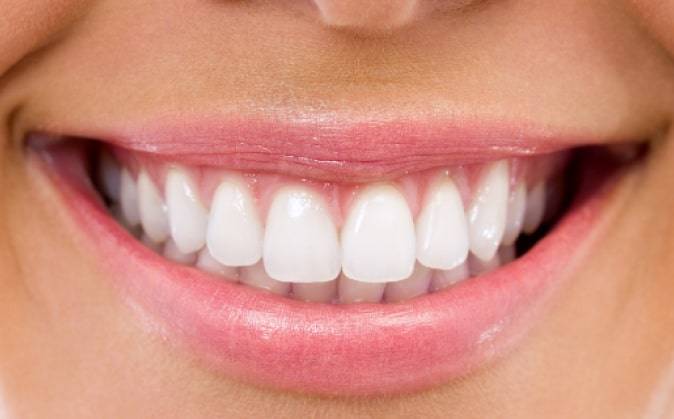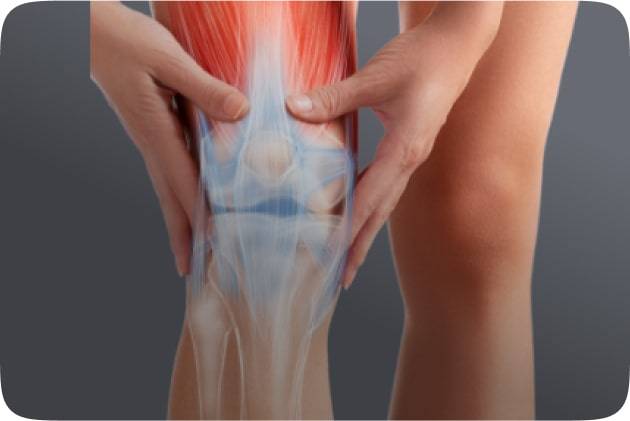A Comprehensive Guide to Identifying, Understanding and Managing Migraine Headaches
Migraine is a neurological disorder characterized by recurring moderate to severe headaches that are typically accompanied by other symptoms. It is estimated to affect around 1 in 7 people worldwide and is more common in women than men. Migraine headaches are often pulsating or throbbing in nature and usually affect one side of the head, although they can occur on both sides. Migraine is a debilitating neurological condition that affects millions of individuals worldwide. As a neurologist, it is essential to raise awareness and understanding of this condition to improve patient care and quality of life.
Migraine attacks can last for several hours to a few days, and they can significantly impact an individual’s daily activities and quality of life. The frequency of attacks can vary, with some people experiencing migraines occasionally, while others may have them several times a month.
The exact cause of migraines is not fully understood, but it is believed to involve a combination of genetic, environmental, and neurological factors. It is thought that migraines result from abnormal brain activity that affects the way nerves, blood vessels, and chemicals in the brain interact.
Pathophysiology of migraine:
Migraine is believed to involve a complex interplay of neurovascular and biochemical factors. The neurovascular theory suggests that abnormalities in blood vessels and nerves play a role. Disruptions in the regulation of blood flow, particularly dilation and constriction of blood vessels, may contribute to the pain experienced during migraines. Additionally, neurotransmitters, including serotonin, have been implicated in migraine pathophysiology. Cortical spreading depression, a wave of neuronal activity changes across the brain, is also associated with migraine attacks.
Differentiating Migraine from Other Headaches
Not all headaches are migraines. While all headaches involve discomfort or pain in the head, there are distinct features that help differentiate migraines from other types of headaches:
Migraine Headaches:
Typically one-sided: Migraines often affect one side of the head, although they can sometimes involve both sides.
Pulsating or throbbing pain: Migraine headaches are often described as a pulsating or throbbing sensation, which can be moderate to severe in intensity.
Moderate to severe pain: Migraines are known for causing significant pain that can interfere with daily activities.
Associated symptoms: Migraines are commonly accompanied by other symptoms, such as nausea, vomiting, sensitivity to light (photophobia), and sensitivity to sound (phonophobia).
Auras (in some cases): Some individuals experience auras, which are visual or sensory disturbances that can occur before or during a migraine attack. These auras may manifest as flashing lights, blind spots, or zigzag lines in the visual field.
Tension Headaches:
Generalized pain: Tension headaches typically involve a diffuse, dull, and aching pain that may affect both sides of the head.
Mild to moderate pain: The pain associated with tension headaches is usually mild to moderate intensity.
Lack of associated symptoms: Unlike migraines, tension headaches are not typically accompanied by nausea, vomiting, or sensitivity to light and sound.
Cluster Headaches:
Excruciating pain: Cluster headaches are characterized by severe, intense, and excruciating pain, often described as a stabbing or piercing sensation.
Located around one eye: The pain of cluster headaches is typically focused around one eye or temple region.
Cluster periods: Cluster headaches occur in cyclical patterns or “clusters,” with frequent attacks happening over a period of weeks or months, followed by periods of remission.
Autonomic symptoms: Cluster headaches are often accompanied by autonomic symptoms such as nasal congestion, eye redness, and tearing.
Common Symptoms of Migraine
Migraine attacks are often characterized by more than just a severe headache. They involve a variety of symptoms that can vary in intensity and duration from person to person. Recognizing these symptoms is crucial for identifying and differentiating migraines from other conditions. Here are some common symptoms associated with migraines:
Pulsating or Throbbing Pain: The headache experienced during a migraine attack is typically described as a pulsating or throbbing pain. It can be moderate to severe in intensity and may affect one side or both sides of the head.
Sensitivity to Light (Photophobia): Many individuals with migraines experience sensitivity to light. Even normal indoor lighting or exposure to bright sunlight can worsen the headache and cause discomfort. In severe cases, individuals may need to seek a dark and quiet environment to find relief.
Sensitivity to Sound (Phonophobia): Similar to light sensitivity, individuals with migraines often become highly sensitive to sound during an attack. Noises that are usually tolerable may become irritating and exacerbate the headache.
Nausea and Vomiting: Migraines frequently involve gastrointestinal symptoms. Nausea and the urge to vomit are common during a migraine attack. These symptoms can significantly contribute to the overall discomfort experienced by individuals with migraines.
Visual Disturbances (Auras): Some people experience auras before or during a migraine attack. Auras are reversible neurological symptoms that can affect vision. They may manifest as flashing lights, blind spots, zigzag lines, or other visual disturbances. Not everyone with migraines experiences auras, but when they do occur, they typically last for a short duration before the headache phase begins.
Dizziness and Vertigo: Migraine attacks can also cause feelings of dizziness or vertigo. Some individuals may experience a spinning sensation or a loss of balance during an episode.
Sensory Sensitivity: Beyond sensitivity to light and sound, individuals with migraines may become hypersensitive to other sensory stimuli, such as touch, smell, or even certain odors. These sensitivities can further exacerbate the discomfort associated with migraines.
It’s important to note that not all individuals will experience all of these symptoms during a migraine attack. The presence and severity of symptoms can vary from person to person and from one migraine episode to another. Additionally, migraines can be accompanied by other symptoms like fatigue, difficulty concentrating, neck pain, and changes in appetite. By understanding these common symptoms, individuals can better recognize when they are experiencing a migraine rather than another type of headache or health condition.
Identifying Migraine Triggers
Identifying and managing individual triggers is an important aspect of migraine management. While triggers can vary from person to person, there are several common triggers that have been reported by many individuals with migraines. Understanding these triggers and their potential impact can help individuals take proactive measures to prevent or minimize the occurrence of migraines. Here are some common migraine triggers:
Certain Foods: Certain foods and beverages have been identified as potential triggers for migraines. These can include aged cheeses, processed meats (such as hot dogs and deli meats), chocolate, caffeine, alcohol (especially red wine), and foods containing monosodium glutamate (MSG). It is helpful to keep a food diary to identify any specific items that consistently coincide with migraine attacks.
Stress: Stress is a well-known trigger for migraines. Emotional stress, as well as physical or mental stress, can contribute to the onset of migraines. It is important to identify sources of stress and develop effective stress management techniques, such as relaxation exercises, mindfulness, and regular physical activity.
Hormonal Changes: Hormonal fluctuations, particularly in women, can trigger migraines. Many women experience migraines associated with their menstrual cycle, commonly known as menstrual migraines. Hormonal contraceptives or hormone replacement therapy can also influence migraine frequency and intensity. Tracking hormonal patterns and working closely with a healthcare provider can help manage these triggers.
Lack of Sleep: Sleep disturbances, such as insufficient sleep or irregular sleep patterns, can contribute to the occurrence of migraines. Establishing a regular sleep schedule and practicing good sleep hygiene, such as creating a conducive sleep environment and avoiding stimulating activities before bedtime, can help reduce the risk of migraines.
Environmental Factors: Certain environmental factors can act as triggers for migraines. These may include strong odors (such as perfumes or chemical scents), bright or flickering lights, loud noises, and changes in weather or barometric pressure. Identifying specific environmental triggers and taking steps to avoid or minimize exposure can be beneficial.
Physical Factors: Physical exertion, such as intense exercise or engaging in strenuous activities, can trigger migraines in some individuals. It is important to find a balance between physical activity and rest, and to gradually increase exercise intensity to minimize the risk of migraines.
To identify individual triggers, it can be helpful to maintain a headache diary. This involves recording details about each migraine attack, including the date, time, duration, symptoms, and potential triggers that preceded the attack. By noting patterns and identifying common factors associated with migraines, individuals can work towards managing and avoiding triggers.
Self-Assessment
Keeping a Migraine Diary: Maintaining a migraine diary is an invaluable self-assessment tool. By recording the timing, duration, intensity, triggers, and associated symptoms of your migraines, you can identify patterns and triggers. This information can guide treatment decisions and help you communicate effectively with your healthcare provider.
Consulting a Healthcare Professional
A neurologist or headache specialist can offer expert guidance and tailor a treatment plan to your specific needs. They may recommend lifestyle modifications, prescribe medications for acute attacks or preventive purposes, and suggest non-pharmacological interventions like stress management techniques or relaxation exercises.
Diagnostic criteria
The International Classification of Headache Disorders (ICHD) provides diagnostic criteria for migraines. A thorough medical history and physical examination are essential for diagnosing migraines. Diagnostic tests, such as brain imaging or blood tests, are typically performed to rule out other potential causes of headaches rather than specifically diagnosing migraines.
Managing and Preventing Migraine Attacks
Managing and preventing migraine attacks involves a multi-faceted approach that combines lifestyle modifications, medication options, complementary therapies, and emerging treatments. By implementing these strategies, individuals can better control and reduce the frequency and severity of their migraines. Here are the key approaches to managing and preventing migraine attacks:
Lifestyle Modifications:
Establish a regular sleep routine: Maintaining a consistent sleep schedule and getting an adequate amount of sleep can help prevent migraines.
Manage stress: Stress reduction techniques, such as relaxation exercises, mindfulness meditation, and engaging in enjoyable activities, can help manage stress and decrease the likelihood of migraine attacks.
Identify and avoid triggers: As discussed earlier, identifying and avoiding individual triggers, such as certain foods, environmental factors, and hormonal changes, can play a significant role in preventing migraines.
Maintain a balanced diet: Consuming a well-balanced diet, staying hydrated, and avoiding skipped meals can help regulate blood sugar levels and reduce the risk of migraines.
Medication Options:
Acute medications: Over-the-counter pain relievers like nonsteroidal anti-inflammatory drugs (NSAIDs) or specific migraine medications (such as triptans) can help alleviate pain during a migraine attack.
Preventive medications: For individuals experiencing frequent or severe migraines, preventive medications may be prescribed. These medications aim to reduce the frequency and severity of attacks and may include beta-blockers, anticonvulsants, antidepressants, or Botox injections.
Medication management: Working closely with a healthcare professional is essential for choosing the most suitable medication and dosage, as well as monitoring any potential side effects.
Complementary Therapies:
Biofeedback: Biofeedback techniques involve learning to control bodily functions through monitoring devices. It can help individuals recognize and manage physiological responses associated with migraines, such as muscle tension and skin temperature.
Relaxation techniques: Practicing relaxation techniques, such as deep breathing exercises, progressive muscle relaxation, or guided imagery, can help alleviate stress and promote overall well-being.
Mind-body practices: Techniques like yoga, tai chi, and meditation have been shown to reduce the frequency and intensity of migraines and can provide additional benefits for overall health and well-being.
Managing Migraine in Special Populations
Migraine in children and adolescents: Diagnosing and managing migraines in children and adolescents present unique challenges. The symptoms may differ from those in adults, and treatment options need to consider age-appropriate medications and potential side effects. Lifestyle modifications, stress management, and proper sleep hygiene are particularly crucial in this population.
Migraine in women: Migraines are more prevalent in women, and hormonal factors play a significant role. Hormonal fluctuations during the menstrual cycle can trigger migraines in some women. Careful management, including lifestyle modifications, hormone therapy, or specific migraine medications, is necessary for women experiencing migraines during pregnancy or while breastfeeding.
It’s important to note that the management of migraines can be highly individualized, and what works for one person may not work for another. Consulting with a healthcare professional, particularly a neurologist or headache specialist, is crucial for developing an individualized treatment plan that considers the specific needs and characteristics of each individual.
By combining lifestyle modifications, appropriate medications, and complementary therapies, individuals with migraines can significantly reduce the impact of the condition on their daily lives and improve their overall quality of life.
By understanding the signs, symptoms, triggers, and management strategies associated with migraines, you can empower yourself to take control of this neurological condition. Seek medical evaluation, maintain open communication with your healthcare provider, and implement appropriate lifestyle modifications and treatment strategies to effectively manage migraines and improve your overall quality of life.










